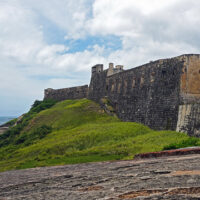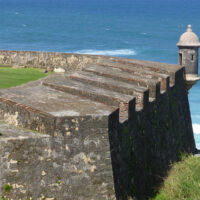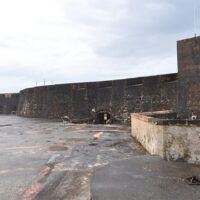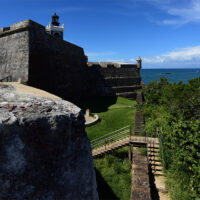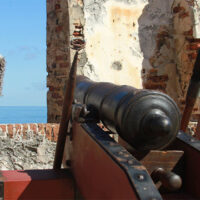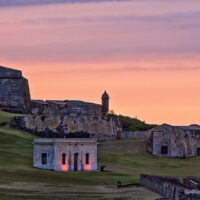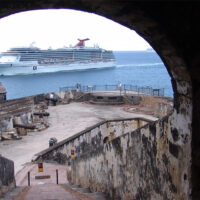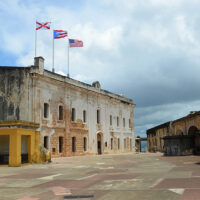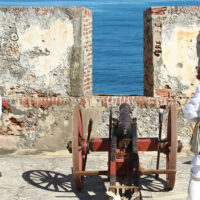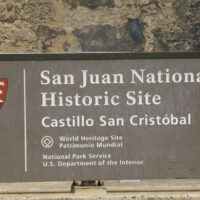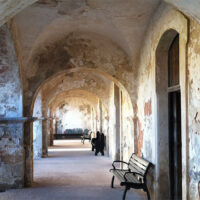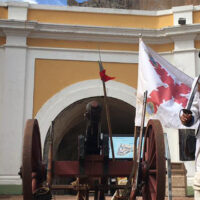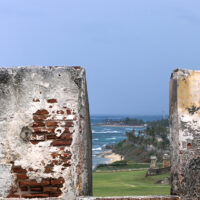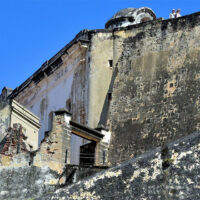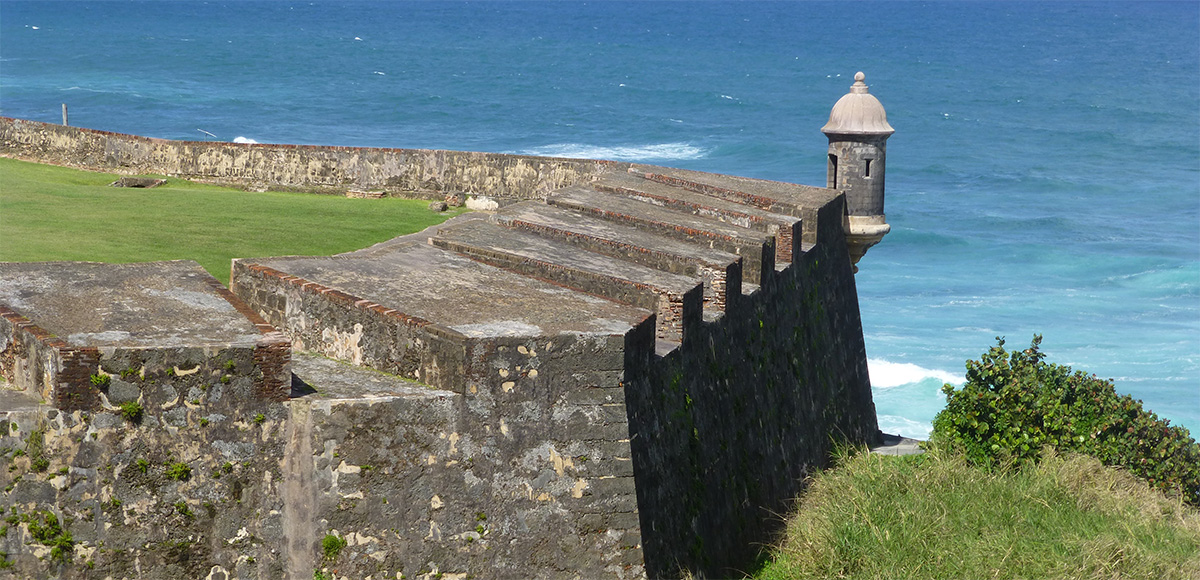
Fort San Cristóbal
San Juan, Puerto Rico
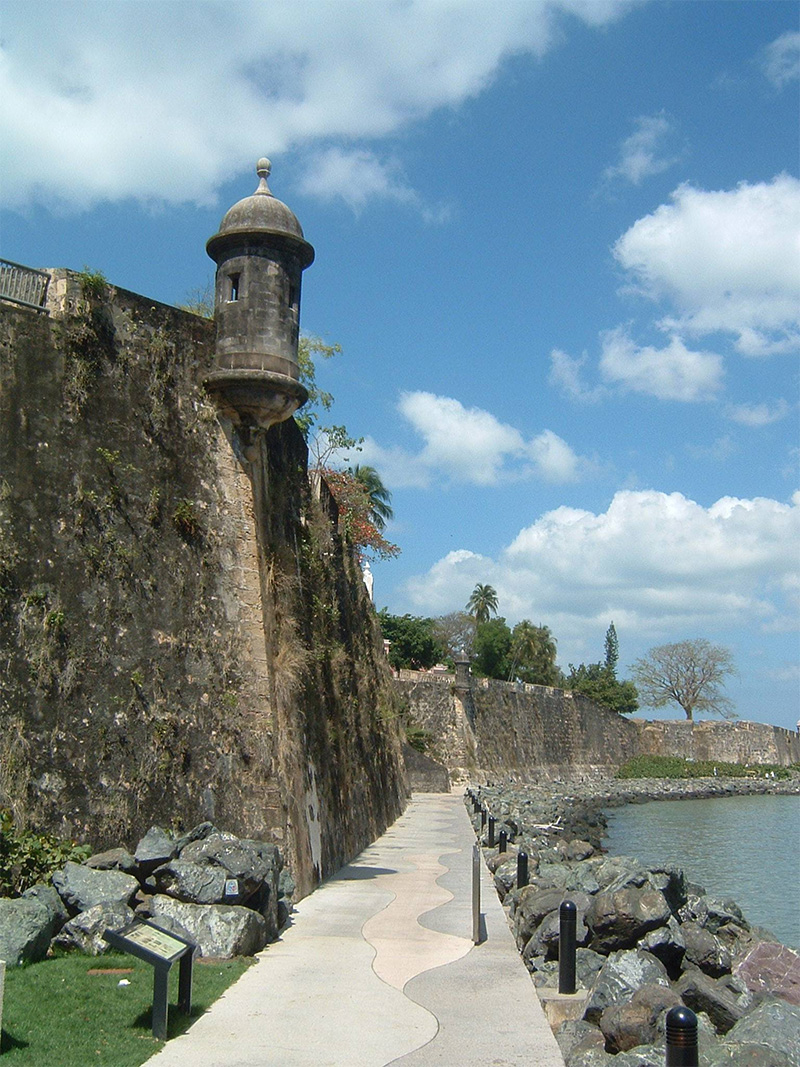
Fort San Cristóbal, also known as Castillo de San Cristóbal, is one of the most significant and impressive historical landmarks in Old San Juan, Puerto Rico. This sprawling fortress, which dates back to the 17th century, is a testament to Spanish military ingenuity and stands as a symbol of the island’s strategic importance during the colonial era. As the largest fortification built by the Spanish in the Americas, Fort San Cristóbal was designed to protect the city of San Juan from land-based attacks and played a critical role in defending Puerto Rico from various foreign invaders over the centuries.
Spanning over 27 acres, Fort San Cristóbal is part of the San Juan National Historic Site, which includes other significant structures like Castillo San Felipe del Morro. Together, these fortifications are a remarkable example of the military engineering of the time and are recognized as a UNESCO World Heritage Site.
From its strategic position on the hills of Old San Juan, visitors today can explore the fortress’s storied past, walk through its labyrinthine tunnels, and experience breathtaking views of the Caribbean coastline. Whether you’re a history buff, a fan of architecture, or simply someone who appreciates the beauty of the island, a visit to Fort San Cristóbal offers a captivating journey through Puerto Rico’s colonial past and its role in global history.
The History and Construction of Fort San Cristóbal
Fort San Cristóbal was constructed over several decades, with the foundation laid in 1634 and the final touches completed in 1765. The fort was originally built to protect the eastern approach to Old San Juan, especially against potential land-based attacks. This area of the city was vulnerable due to its proximity to the rest of the island, and after several attacks on Puerto Rico by English and Dutch forces, it became clear that additional defenses were necessary.
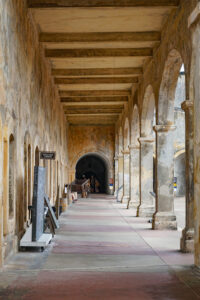
The fortification’s design was influenced by the principles of Vauban-style fortresses, which were named after the French military engineer Sebastien Le Prestre de Vauban. Vauban’s fortifications were known for their star-shaped layouts, which allowed for better defense against attackers by enabling defenders to fire from multiple angles. Under the guidance of Irish engineer Tomás O’Daly and Juan Francisco Mestre, Fort San Cristóbal was built with such features, ensuring its effectiveness as a military stronghold.
The fort was named after San Cristóbal, the patron saint of travelers, particularly those who travel by land. This was a fitting tribute, as the fort’s primary purpose was to protect the city from land-based invasions. It also served as a counterpart to Castillo San Felipe del Morro, which was built to defend the city against naval attacks.
Architecture and Features
The fort spans a remarkable 27 acres and is one of the largest Spanish military structures ever built in the New World. Fort San Cristóbal is comprised of several distinct sections, including three main levels that visitors can explore:
- Level 1 (Main Square): This is the lowest level and served as the entry point for soldiers, visitors, and supplies. It is the primary gathering area within the fort.
- Level 2 (Main Firing Battery): This level contains the fort’s cannon batteries, which were used to defend the fortress and the city from invaders. It offers visitors a close look at the fort’s artillery and military capabilities.
- Level 3 (Observation Area): The highest point of the fort, this level offers stunning panoramic views of the city and the surrounding coastline.
In addition to its three levels, the fort features secret tunnels, dungeons, cannon loopholes, sentry boxes (“garitas”), and barracks. One of the most famous features of the fort is the “Devil’s Garita”, a sentry box with a dark legend attached to it. According to local folklore, soldiers who were stationed there mysteriously vanished over the years, giving rise to ghost stories and eerie tales that continue to captivate visitors today.
The fort’s extensive tunnel system is particularly fascinating. The tunnels were designed to be used for multiple purposes, including military communication, transportation of supplies, and providing protection from enemy fire. The tunnels are a labyrinth of narrow, dimly lit passageways that make it easy to imagine the fort’s strategic military use during the 18th century. Completed in 1780, these tunnels also served to confuse attackers and hinder their progress, providing defenders with valuable time to react to threats.
Fort San Cristóbal’s Role in Puerto Rican History
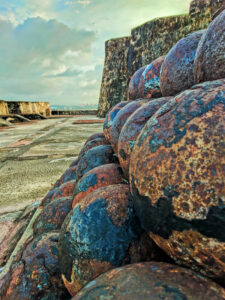 Fort San Cristóbal’s role in Puerto Rico’s defense cannot be overstated. Over the years, the fort played a key part in repelling several significant attacks, most notably the Battle of San Juan in 1797, when British forces under Ralph Abercromby attempted to seize the city. The fort’s successful defense during this battle proved its military effectiveness and strategic importance. The fort also became involved in later military conflicts, such as during the Spanish-American War when its cannons fired on the USS Yale, inadvertently pulling Puerto Rico into the conflict. This moment marked a turning point in Puerto Rican history, as the island was ceded to the United States in the Treaty of Paris in 1898.
Fort San Cristóbal’s role in Puerto Rico’s defense cannot be overstated. Over the years, the fort played a key part in repelling several significant attacks, most notably the Battle of San Juan in 1797, when British forces under Ralph Abercromby attempted to seize the city. The fort’s successful defense during this battle proved its military effectiveness and strategic importance. The fort also became involved in later military conflicts, such as during the Spanish-American War when its cannons fired on the USS Yale, inadvertently pulling Puerto Rico into the conflict. This moment marked a turning point in Puerto Rican history, as the island was ceded to the United States in the Treaty of Paris in 1898.
Visitor Experience and Information
Fort San Cristóbal is open to visitors every day from 9:00 am to 6:00 pm, except for Thanksgiving, Christmas, and New Year’s. The fort offers self-guided tours, where visitors can explore the various sections of the fort at their own pace. Brochures and informational posters are available throughout the site to provide additional context about the fort’s history, construction, and role in Puerto Rican defense.
The fort also has two entrances: the Historic Entrance, located at the top of the hill on Norzagaray Street, and the Main Entrance at the eastern end of Norzagaray Street. Visitors can take advantage of both entrances to explore different aspects of the fort and enjoy its impressive views of San Juan Bay.
The admission fee is $3 for adults (ages 16 and over), and children under 16 can enter for free. There is parking available at the underground facility beneath Plaza del Quinto Centenario in the Ballajá Barracks on Calle Norzagaray.
A UNESCO World Heritage Site
In 1983, Fort San Cristóbal, along with Castillo San Felipe del Morro, was designated a UNESCO World Heritage Site as part of the San Juan National Historic Site. This recognition highlights the fort’s significance as a historical and architectural treasure that reflects the military, cultural, and social history of Puerto Rico. Visitors to the site not only experience an important chapter of Puerto Rico’s past but also gain insight into the broader history of the Spanish Empire and its impact on the Americas.
How to Get to Fort San Cristóbal
Getting to Fort San Cristóbal is easy due to its central location in Old San Juan, Puerto Rico.
- From most parts of San Juan, follow PR-25 (Avenida Juan Ponce de León) to the entrance of Old San Juan.
- Once inside Old San Juan, take Calle Norzagaray to reach the fort. The streets in Old San Juan can be narrow and busy, so plan for potential traffic and limited parking availability.
- Public parking is available nearby at the Ballajá Barracks or the Doña Fela Parking Garage, both within walking distance of the fort.
Address and Map:
Physical address:
Castle San Felipe del Morro
501 Cll. Norzagaray
Old San Juan
San Juan, Puerto Rico 00901
Contact:
(787) 729-6960 | (787) 729-6777
View Website
Fort San Cristóbal remains one of the most iconic and well-preserved military structures in Puerto Rico and a must-see destination for anyone visiting Old San Juan. Whether you're exploring its tunnels, learning about its history, or simply admiring its stunning views, a trip to this remarkable fortress is a journey into the past and a celebration of Puerto Rico’s rich cultural heritage.

